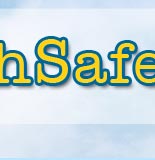 |
 |
 |
 |
 |
 |
|||||||||
Join our mailing list and receive updates about our activities. |
Seven Steps to a safer School
|
 |
| Listening Sessions: |
The team should schedule opportunities for various groups to speak their minds about the safety conditions in the school. Students, teachers, non-instructional staff, unclassified staff, parents, and community members should have a chance to freely air their concerns and provide input in a non-judgmental atmosphere in front of the School Safety Planning Team. This should be a time for the team to listen and record only, and not a time to debate the merits of anyone’s opinion. Listening sessions help to put a human face on and flesh out the meaning of the data from other sources of the assessment.
|
| What Are We Currently Doing? |
An essential component of assessing the situation is to identify and evaluate the programs and procedures currently in place that are designed to have an impact on school safety.
• Are personnel and resources being allocated to programs that have not demonstrated The School Safety Planning Team needs to take a hard look at current programs and procedures and make recommendations for their continuation and/or modification. In an optimal situation, every prevention or intervention “pulls its own weight” by providing program evaluation data that demonstrates effectiveness. For each identified program or procedure, the team should ask: • Does the program or procedure have articulated, measurable outcome goals? Skill in the design and implementation of program evaluations is typically held by most school psychologists, and this individual can serve as a primary consultant to this effort. |
• Conduct a Safe Schools Checklist using the downloadable Safe Schools Checklist PDF, or other on-line forms
• Examine the existing school records, including office disciplinary records using The Disciplinary Record Review Form
• Conduct Listening Sessions for all major stakeholders
• Identify and evaluate existing programs and procedures
Expanded Explanation:
The first action task of the School Safety Planning Team is to take stock in the nature of the current situation in the school. The central questions are: What are our problems? What are we currently doing about them? For some, the scope and nature of the problems may seem obvious, but team members should resist the urge to start “doing something” before systematically gathering useful data. It is particularly important in short budget times to be able to point to the results of a well-conceived assessment when vying for limited resources. In addition, assessment data are very important when it comes to evaluating program progress.
What Are Our Problems? Safe Schools Checklist and Climate Surveys
What is the current reality in our school, and what is the desired reality? The answers to these questions will provide a focus for the plan, and those answers lie in the personal experiences and opinions of the people in the building and in the archival records of the school. Of course, the best way to find out the opinion of the people in the building is to ask them. A Safe Schools Checklist is a simple but systematic method to gather this important information. By clicking on this link, you will be taken to a downloadable Safe Schools Checklist PDF that is suitable for use by staff and parents in all educational environments. Notice that the survey is organized around the Pyramid of Prevention that recognizes that school safety is the business of everyone, not just an identifiable few. The Safe Schools Checklist provides a series of positive school conditions that have been established in the literature and in practice to be associated with safe and effective learning environments. The checklist asks the respondents to rate whether they perceive that a particular positive school condition exists in the building (Implemented, Partially Implemented, Not Implemented), and also asks them to put into priority their sense of its need. The data from this checklist can be easily entered into a spreadsheet program or hand-tallied, and the results can provide the School Safety Planning Team with guidelines for action.
The California School Climate and Safety Survey – Staff Form is a 62-item survey that examines school staff members’ opinions and experiences with safety-related issues. The measure is comprised of three major sections: Perceptions of School Climate, Perceptions of School Danger, and Reports of Victimization. This instrument is available for download at http://www.education.ucsb.edu/school-pscyhology/. The California Healthy Kids Survey (http://www.wested.org/pub/docs/chks_home.html) has a Staff School Climate Survey that examines a broad range of potential staff concerns, including those related to school violence and student discipline issues.
The California School Climate and Safety Survey – Short Form is a 52-item scale for students. The scale yields self-report information from students in three principal areas: School Danger, School Climate, and School Victimization. This measure is available for download at http://www.education.ucsb.edu/school-psychology
Archival Record Review :
A second method for assessing the problems is for the School Safety Planning Team to examine the existing school records. Disciplinary office referrals can be an informative measure over time of those student behaviors that may contribute to an unsafe learning environment. These records may contain answers to questions such as:
• What is our current weekly frequency of fistfights between students?
• Which group of students is most at risk for this behavior?
• What areas in the building or on the grounds tend to occasion this behavior?
• How many bullying complaints have been received since the beginning of the year?
• Which staff members refer the most students for disciplinary complaints?
The Disciplinary Record Review Form provides a useful template for assembling this information. Accuracy and consistency in the reporting and retrieval of this information are essential to its usefulness as an index of school safety. The School Safety Planning Team may find a document from the National Center for Educational Statistics entitled, Recommendations of the Crime, Violence, and Discipline Reporting Task Force (http://nces.ed.gov/pubs/97581.pdf) useful in their efforts. If the school does not already have well-delineated definitions of persons, incidents, and consequences associated with school discipline, an excellent model is described. In addition, Software-based reporting systems can be found at http://www.schoolsafetysoftware.com/default.htm and at http://www.swis.org/index.php

This web site has been produced by The Melissa Institute for Violence Prevention and Treatment to provide research-based school violence prevention procedures for educators. The web site has been made possible with the generous support of the Robert and Renee Belfer Foundation and other supporters. |
 |
The Melissa Institute for Violence Prevention and Treatment to provide research-based school violence prevention procedures for educators Terms and Conditions |
|
